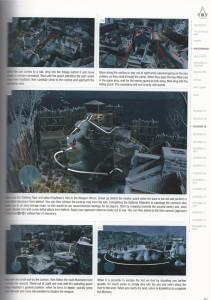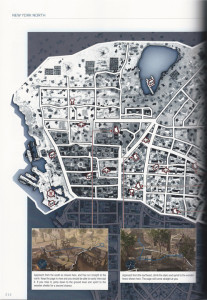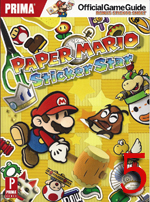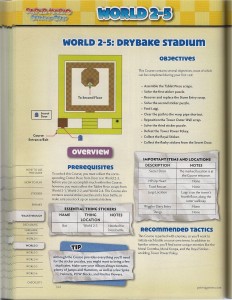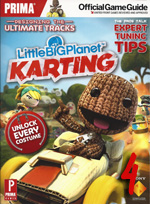 I am a big fan of kart racing games. Ever since Mario Kart first dropped on the SNES, my enjoyment of these games has spanned over eight consoles and covered everything from Crash Bandicoot to Diddy Kong. Now I get to take my favorite SackBoy for a romp in a kart through cardboard courses and collect stickers along the way, all thanks to LittleBigPlanet: Karting. It is sooooo much fun!
I am a big fan of kart racing games. Ever since Mario Kart first dropped on the SNES, my enjoyment of these games has spanned over eight consoles and covered everything from Crash Bandicoot to Diddy Kong. Now I get to take my favorite SackBoy for a romp in a kart through cardboard courses and collect stickers along the way, all thanks to LittleBigPlanet: Karting. It is sooooo much fun!
Prima also seems to like the world of imagination and racing because they pumped out a LittleBigPlanet: Karting strategy guide for us wannabe Mario Andretti racers. One would expect that cracking open the guide would immediately lead to the basics of how to control that amazing Bento Box, but this is not the case. Instead, we find concept art for stages, characters, and stickers. While this caught me by surprise, I loved it as it warmed me up the whimsical world I was about to partake. Don’t worry, the basics of braking, prize bubbles, and drifting come right after this, but take a moment to enjoy the art assets that the developers work hard at producing.
After the basics, it is time to dive into the story mode. The authors breakdown each new event type, how many prize bubbles are scattered about the track, and list all the rewards earned for that stage. This is where the detailed maps of every race come in handy as they show where one may find all the prize bubbles along with things such as launch points, jet packs, weaponators, and such. Concluding each race, they go into detail on what to watch out for during the event, how to obtain some of the harder to find items, and general tips on how to defeat the opponents. While this might be a racing game, I found that studying each event before I jumped into it in the game very helpful and led to fewer missed items and a lot less retries.
Scattered amongst the story section are the challenge races that unlock as the game progresses. Take some time to read these as they offer great advice on how to tackle each challenge, as these are no joke. For example, the first one that unlocks is a drifting course where the only way to unlock all the loot is to score 60,000+ points. The guide breaks down the course and offers up that it is best to use the first drifting boost instead of building it up to the maximum, as it takes far too long to snag that big burst of speed. Completing these challenges still ultimately comes down to player skill, but the advice offered here is invaluable.
The last few pages go to the creation mode and end with the trophy list. Anyone who spent time in LittleBigPlanet 1 or 2 will immediately feel at home and so the creation section is more of a refresher on popit use as well as explaining the details behind the unique items available to track building. Newbies to this whole world building process will want to spend some time reading the pages here as they do offer up a bit more info than what the game does. There is good stuff here for all players, and master designers will find themselves coming back to this section during their building process.
There are a few potholes to all this, however. I found the guide took some time to sift through to find the current race I was on or the challenge mode I was tackling at the time. I also found a few prize bubbles I could not snag and the strategy guide said nothing about how to obtain them. These are far and few between, so they don’t necessarily constitute a deal breaker.
For a game that does not immediately feel like a strategy guide is necessary, I found myself using this a lot. Sure, there are a few points that I wish contained more detail on how to grab this or that, but overall this is fairly thorough and useful. Anyone that wants to have every sticker and kart customization piece available to them, the LittleBigPlanet: Karting strategy guide is your Bible!
SGR Rating 4/5
Author: Dean Leng and Ronald Gaffud
Publisher: Prima Games
Editions Available: Paperback
Acquired via Publisher
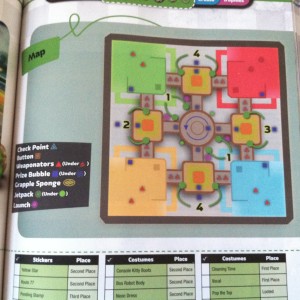

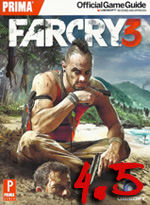 In this day and age it is legitimately rare for a AAA game to catch critics off guard. Probably the biggest exception to that rule in 2012 was Ubisoft’s late-November release, Far Cry 3. Not only did the game’s runaway success come completely out of left field, but many sites ended up considering it as a potential Game of the Year. Does Prima’s official guide live up to the same high standards, or does this open world shooter provide too many opportunities for details to slip through the editorial cracks?
In this day and age it is legitimately rare for a AAA game to catch critics off guard. Probably the biggest exception to that rule in 2012 was Ubisoft’s late-November release, Far Cry 3. Not only did the game’s runaway success come completely out of left field, but many sites ended up considering it as a potential Game of the Year. Does Prima’s official guide live up to the same high standards, or does this open world shooter provide too many opportunities for details to slip through the editorial cracks? I sure have reviewed a mess of fighting games this year, and I am ending it with a brand new entry into the genre. PlayStation All-Stars: Battle Royale is an ambitious game in that it combines some of my favorite PlayStation icons, throws them into an arena where only one may survive, and then lets me fight it out ala Smash Bros style. Boy was I glad to have
I sure have reviewed a mess of fighting games this year, and I am ending it with a brand new entry into the genre. PlayStation All-Stars: Battle Royale is an ambitious game in that it combines some of my favorite PlayStation icons, throws them into an arena where only one may survive, and then lets me fight it out ala Smash Bros style. Boy was I glad to have 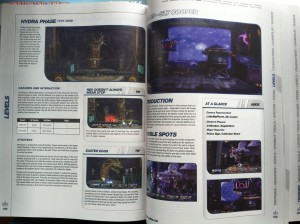
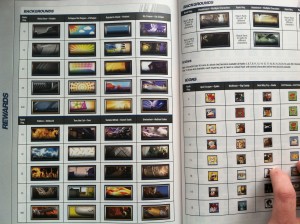
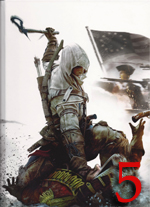 Assassin’s Creed III has been one of this year’s most highly anticipated games, and it’s also been one of my most highly anticipated strategy guides. After how well Piggyback bounced from the
Assassin’s Creed III has been one of this year’s most highly anticipated games, and it’s also been one of my most highly anticipated strategy guides. After how well Piggyback bounced from the 